Existing User Log In
New User Registration
Register for a free account to gain full access to the VGChartz Network and join our thriving community.



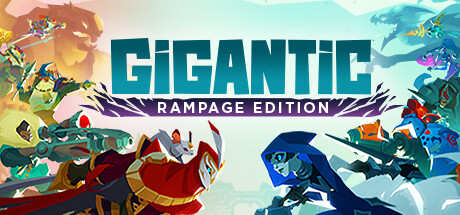

America - Front


America - Back

Abstraction Games
Action
 (Add Date)
(Add Date) (Add Date)
(Add Date) (Add Date)
(Add Date)
| Owners: | 0 |
| Favorite: | 0 |
| Tracked: | 0 |
| Wishlist: | 0 |
| Now Playing: | 0 |
When peering back at the expansive graveyard of defunct online-only titles, Gigantic wouldn't rank among the most popular. It's a shame too, given the ways in which original developer Motiga had a keen eye for investigating the MOBA & Hero Shooter sub-genres. Despite costly trials and tribulations – especially with staff having to work for free for a time - its rough launch and weak recognition led to its official servers being shuttered a year later. Eventually the IP wound up at the feet of Arc Games (formerly Gearbox Publishing) which was – thankfully – interested in giving it new life. Now after entrusting development to Abstraction Games, opting for a platonic shift from free-to-play to a traditional pricing model ($20), and introducing various additions & tweaks alongside it, the pertinent question remains: could the second time be the charm?
I know even mentioning qualities like "Hero Shooter" with a "more cartoony art design" in 2024 will have some rolling their eyes in unison, but I should note for the record that Gigantic was literally announced before Overwatch. Of course, generalized comparisons between the two franchises are perfectly reasonable on their own. But it's the particulars that create such different atmospheres and approaches. 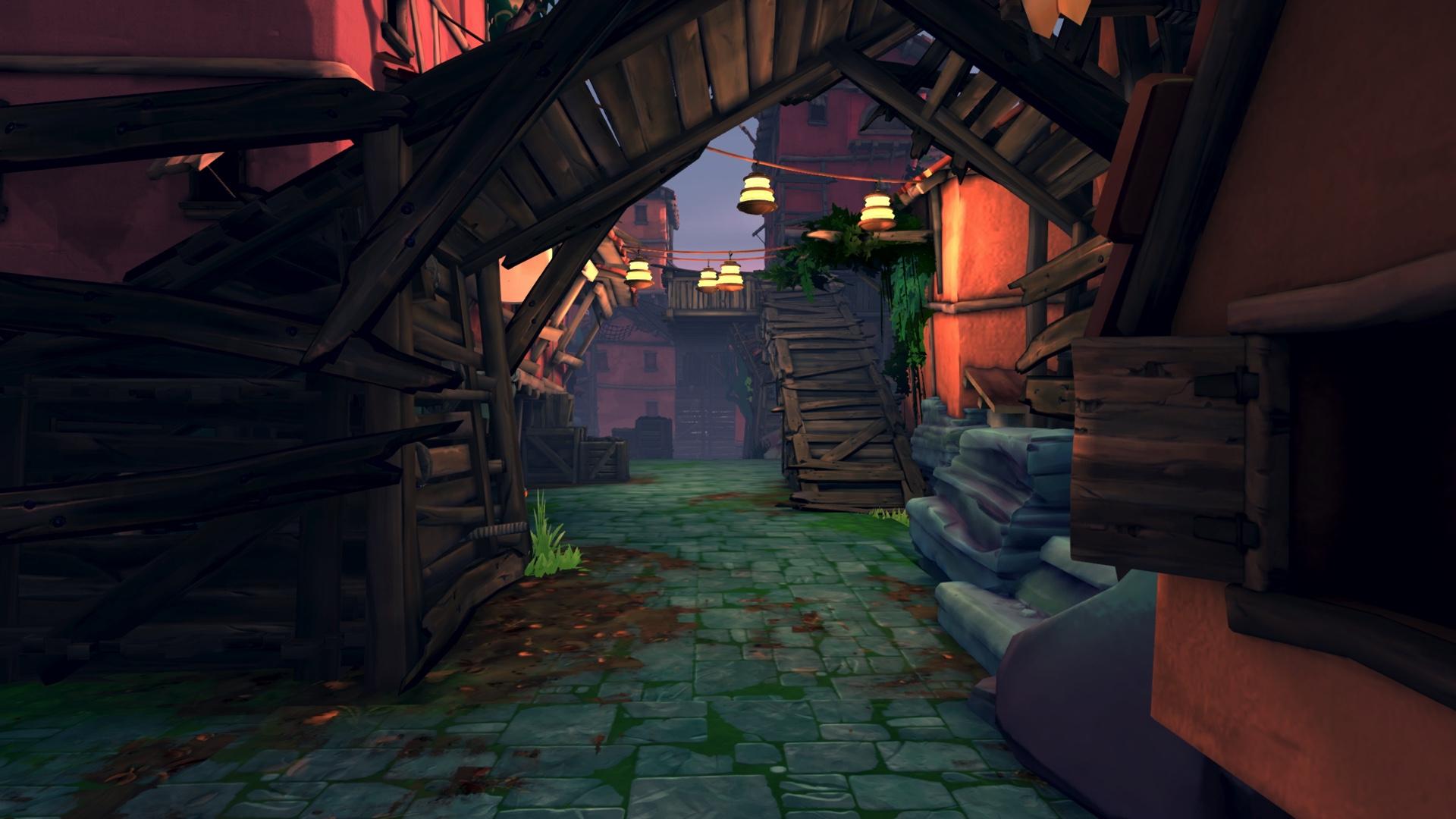
As much as I have... appreciated Overwatch from the start – wild imbalances and all – perhaps the one reason its hooks never went too deep for me was Blizzard's singular focus on what a Hero is constantly expected to be. Given the unique personalities and magical abilities compared to the more tactical Rainbow Six: Siege, something about moving a vehicle or capturing a point eventually lost its mojo in a way planting defusers in Siege hasn't yet. Before even starting a match in Gigantic, anyone can notice every roster character has two separate pre-made builds, which inform what effects apply to your basic strike, passive buffs, each cooldown ability, and ultimate move.
While a couple of characters have some overlapping qualities, the vast majority of this diverse roster feel distinct and effective in ways that don't tamp players down to one specific role. There's a cohesiveness in both exploring the pre-set specializations that compliments certain playstyles and expanding beyond that with the intuitive leveling system (unavailable in Rush mode). Scoring objectives and/or killing enemies will eventually unlock Upgrade points for you to spend on any ability; past that, each ability has two branching paths for whichever is more suitable for your current situation. It's possible to play the same character on the same map for hours on end, and yet no two matches will feel the same if exploring all the disparate build permutations that're most helpful to your team. While this may not be the most complex system across all Hero Shooters or MOBAs, the fluidity during matches allows for player expressiveness rarely seen elsewhere.
These layers feel so fundamentally potent in combat due to the high skill ceiling. While I've emphasized the Hero Shooter side of things, which feels satisfying and plays a key role, Gigantic excels through its well-defined brawling. Given how often this genre's notion of melee is simply thwacking with sequenced combos, the stuffed roster of close-quarters fighters boasts quite an expansive action vocabulary. Past the kinetic combos and punchy sound design, these dynamics work because of the underlying mechanics. Dodging can be a useful two-fold for not only avoiding incoming attacks but also rolling into a pointed parry. And since attacks can be easily canceled, there's incredible potential in chaining combos between basic strikes and cooldown abilities. Depending on which ones you play – such as the titular owl character "Tyto The Swift" – you can deftly fuse attack combos, cancels, and abilities to fly across the map.
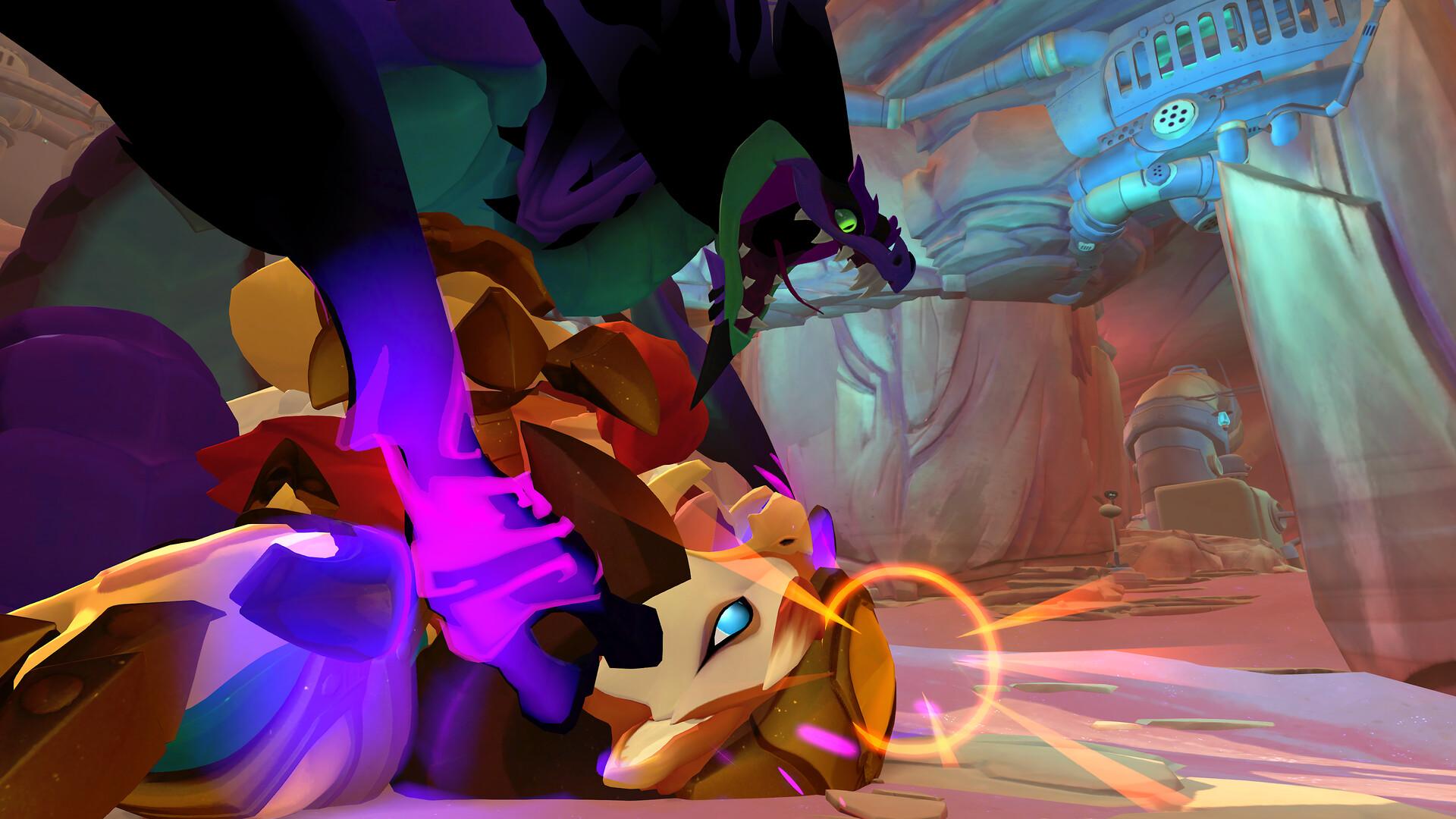
Enhanced melee options that seemingly break the game's movement are balanced out by a high time-to-kill (TTK) rating and the limited stamina pool. Funnily enough, a sign that two quality teams is a modest kill/death count on both sides. While it's frustrating to spot an enemy with little health escape in the nick of time, tactical retreats are so common because of each character's importance on the battlefield. Hell, sometimes being a wounded animal and retreating to your side's health pools can lure enemies over, which can subsequently be countered by flanking teammates. That high risk/high reward dilemma between finishing an enemy and re-focusing your efforts comes into sharper focus when potentially being exposed and exhausted as well. Since running, dodging, and abilities expend energy, you have to gauge what's feasible to accomplish without breaching that limit. That consistent tension – and those split-second decisions to wrestle with – is what makes each kill feel so rewarding.
Of course, making a bunch of mechanics won't go far without an overarching goal. Instead of moving a cart, Rampage Edition's Rush & Clash modes centralize around its namesake: two large Guardians, one waiting on each end of the map, while two teams of five duke it out. The goal is rather simple: kill enemy opponents (worth 10 points) or collect orbs that slowly spawn at objective points (worth 20); the first team to reach 100 points within a round rings the bell for their Guardian to pin the other. From there, you try to deal as much damage as you can against the Guardian's weak point before the timer runs out. The first team to deplete the enemy Guardian's health bar, or all three health bars in Clash, wins the match. Already there's an interesting ebb-n-flow to consider in simply attacking said Guardian. With the potential noise of a 10-person mosh pit between fighters attacking/defending a downed Guardian, you're having to measure risks based on fluctuating circumstances. Since any attackers dying during the retreat puts defenders up early on points, it's often worth interrogating if mindlessly harrying the enemy's stronghold produces more costs than benefits. 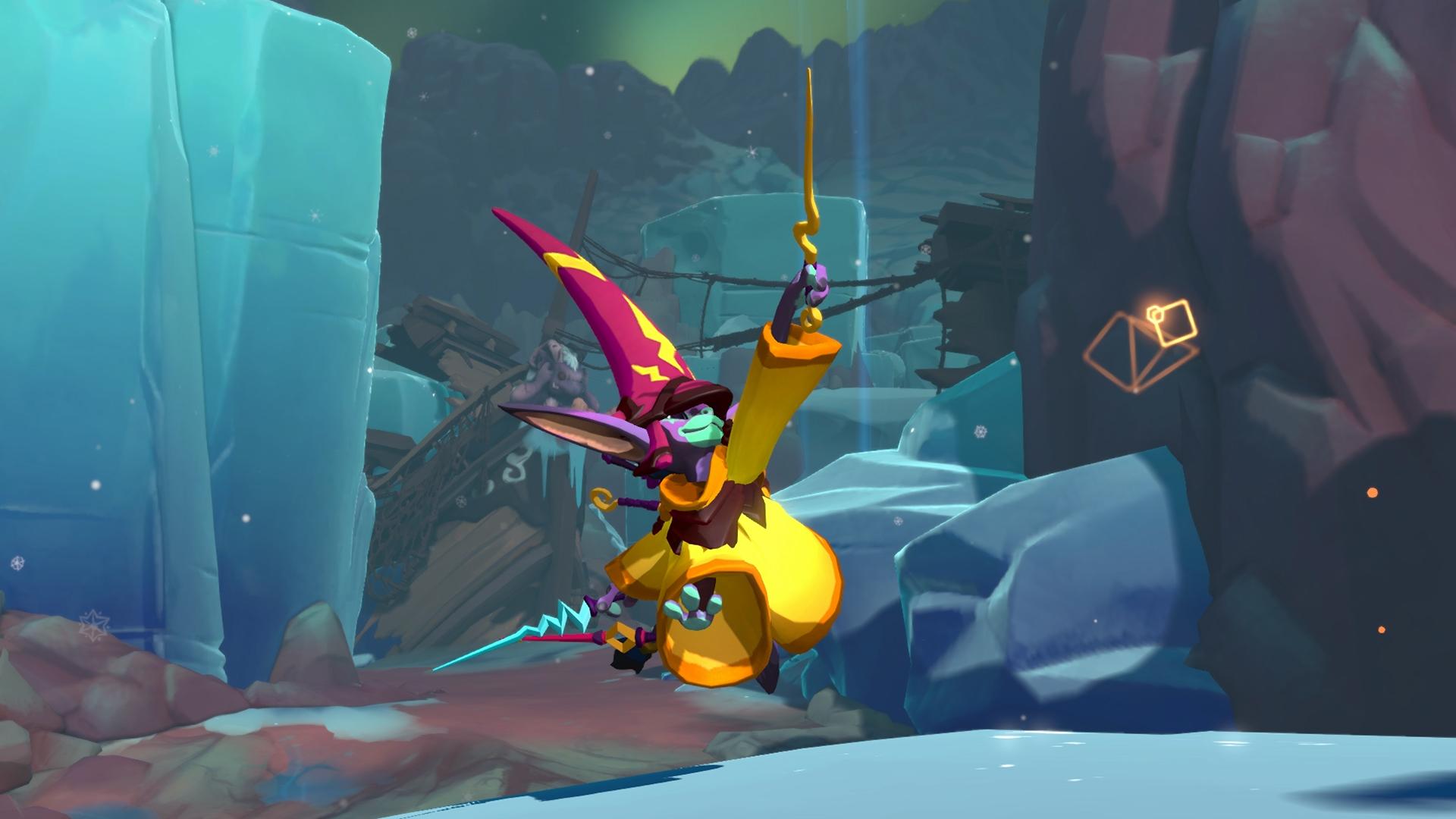
Adding further complexity within map dynamics are the creature summons (for Clash mode) allowed for each team. The list is as follows:
Placing the correct puzzle piece at the right point can play a crucial role in halting flanks, reviving weak teammates, or exposing a gap. On top of this, there are also variants within most groups that are more helpful to different classes and also come in 2 forms: child or adult. Upgrading to their adult forms will cost either 1 or 2 focus charges, adding another layer on whether to sacrifice on a creature or have a stronger ultimate strike. The layers never stop, really.
Aside from all of these intricate design quirks that congeal remarkably well, I'd argue the same holds true for its presentation. There are a few important caveats to consider, of course. It's funny to recall the original as one of the last vestiges of Unreal Engine 3 in action and upgrading beyond that baseline simply wasn't feasible for this price range. Despite such a hurdle, Motiga's soft-texture aesthetic gives it a vibrancy and personality that's aged like fine wine. The multitudinous roster all have unique silhouettes, the fluidity in motion between ranged and melee attackers looks buttery smooth, and all of the relevant UI info (damage indicators, hit effects, and so on) is clearly expressed. The bedlam will occasionally get chaotic, but never to the point of obnoxious visual noise. The premise itself lends everything an epic sense of scale; even small additions like your Guardian's stentorian declarations booming across the map with battle updates.
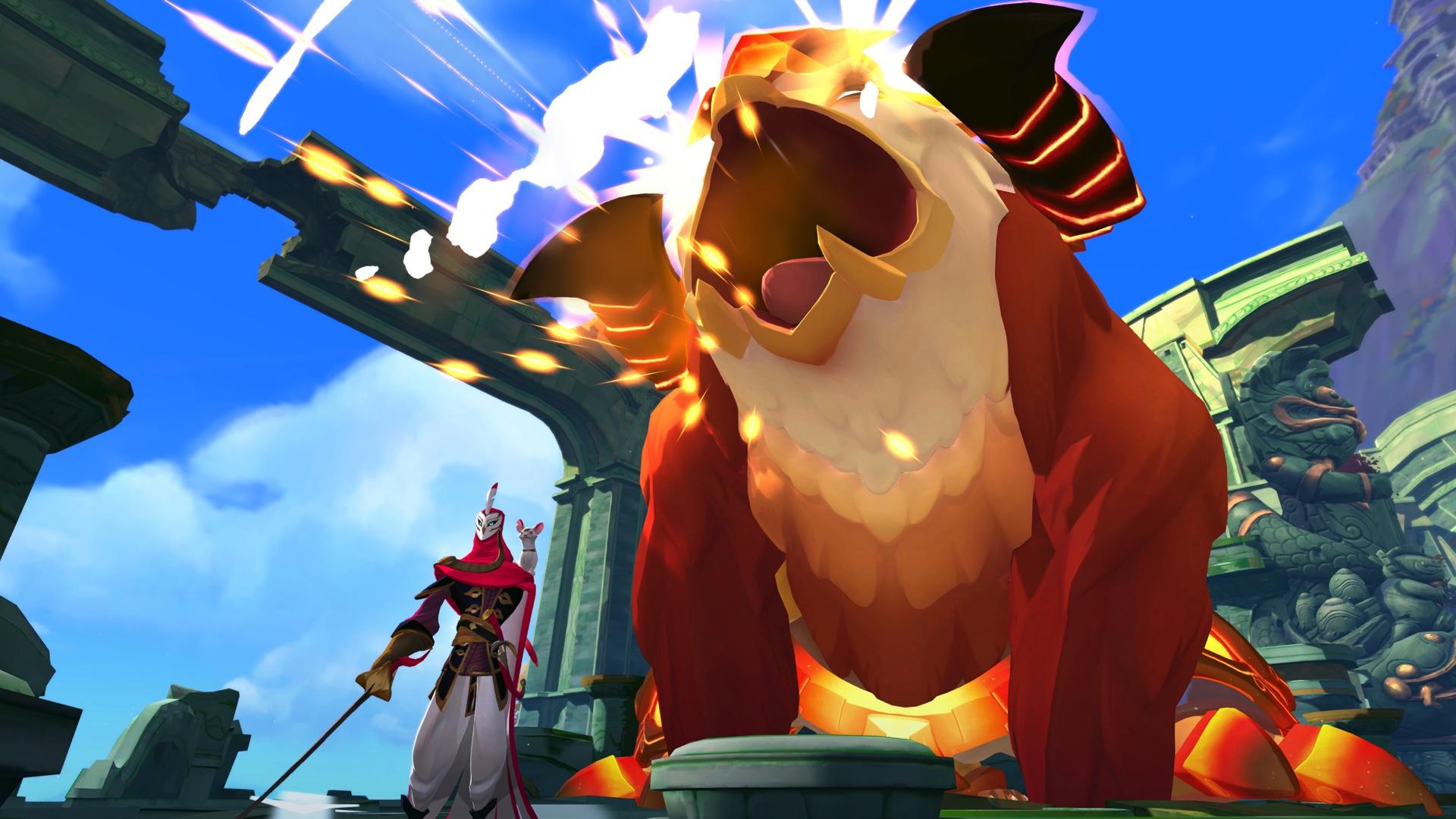
Gigantic's engaging dynamics were known to its fans already. The key concern for Rampage Edition was this: did Abstraction honor its history? While I see the two new characters, two new maps, and most tweaks to be an overall improvement, minus a few nagging imbalances, it's a shame the release has been marred by various technical issues. From disconnects to being incapable of partying up with friends, part of me wishes the team opted to push back the release. Sure, big costs can come with delays, but I'm willing to bet more fans would've been willing to suffer a price hike ($25 or $30) and a summer release if that guaranteed a smooth launch. While I don't want to oversell these problems in the face of many beefy updates since launch - along with the team's transparency on social media - I can't disregard how they've slightly dampened my enthusiasm; in fact, I'd argue expectations ought to be a tad higher for a second effort like this.
While Gigantic, as far as its core mechanics and design philosophy are concerned, will always be credited to the insanely-dedicated and unfortunately-defunct Motiga, Rampage Edition feels like Abstraction's diligent evolution of it. Even swapping to a standardized pay-to-play pricing model without any microtransactions (as of writing) feels like a great shift away from current trends. Beyond just being a good gesture, it feels like a way to avoid distractions and better appreciate what's – arguably – among the best multiplayer experiences of the past decade. While launch-window technical issues marred my experience to an extent, the final result remains a well-made fusion of MOBAs and Hero Shooter/Brawler sensibilities that few titles have dared to match after all these years.
Contractor by trade and writer by hobby, Lee's obnoxious criticisms have found a way to be featured across several gaming sites: N4G, VGChartz, Gaming Nexus, DarkStation, and TechRaptor! He started gaming in the mid-90s and has had the privilege in playing many games across a plethora of platforms. Reader warning: each click given to his articles only helps to inflate his Texas-sized ego. Proceed with caution.









